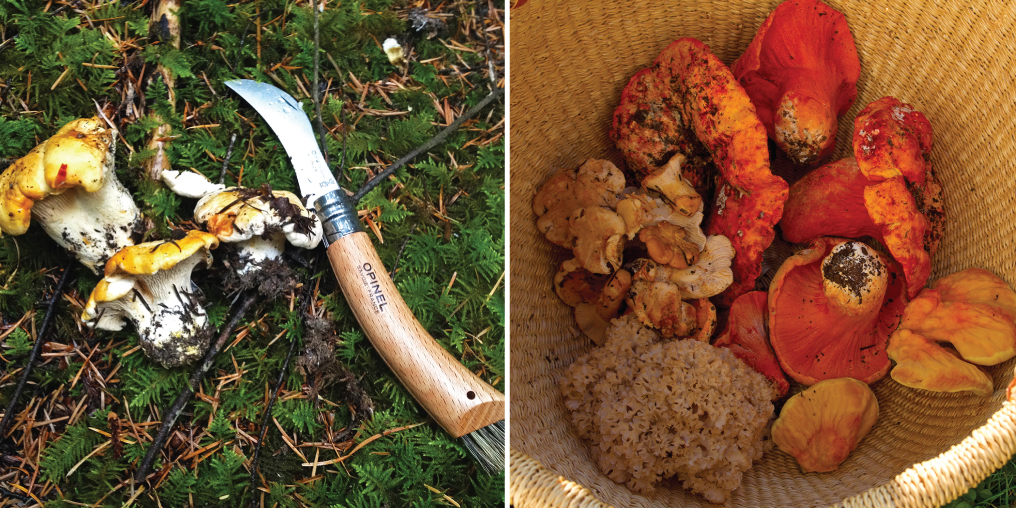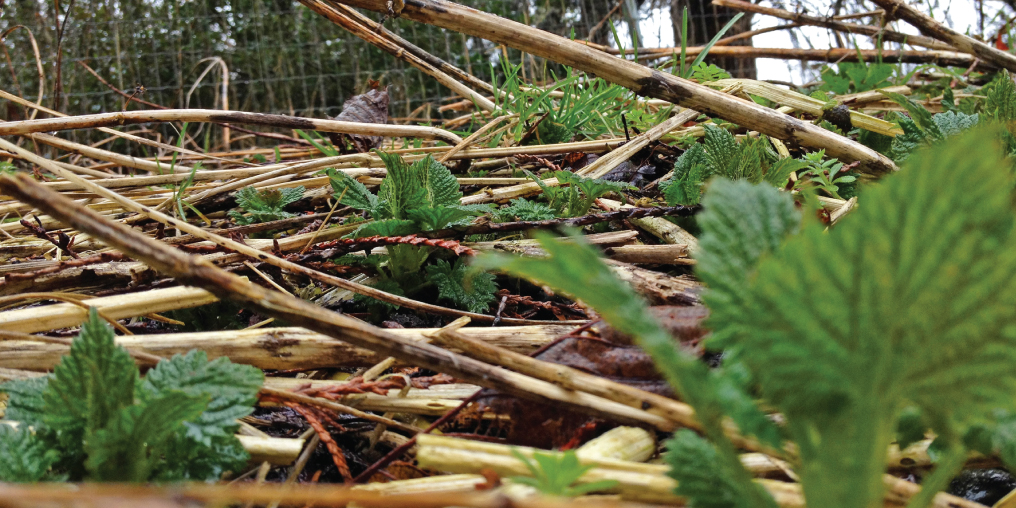A bucket bumps gently against my hip, filling slowly with ripe purple-black berries. This is high summer gathering at its best, picking blackberries from branches heavy under all that fruit, just steps off the roadside. This is easy, and a low-pressure way to venture into foraging. Wait, easy? Only if you don’t follow my lead—long sleeves and pants will keep you protected from the tangle of thorns always protecting the best berries.
A month later and I’m peering under salal for chanterelles poking up through the mossy duff. It feels like I’ve been waiting forever for the first mushrooms to appear; the prolonged hot, dry summer kept these fungal fruits hidden away for longer than usual. A few light rains and I found a small cluster of golden chanterelles waiting just off the trail. Another day, a flush of lobster mushrooms glow red in a backdrop of thick moss but the ongoing warm temperatures that made a bumper crop of blackberries are making fall mushroom picking a sparse game.
Wild foraging leaves you at the mercy of the elements, which can make it both frustrating and more satisfying than a trip to the grocery store. Far more than just a way to fill my belly, finding my own wild food is a way to immerse myself in the environment around me. To be successful in foraging is to learn not just about the edible plants, but the non-edibles too. To learn about the crooks of land and surrounding vegetation that might be home to the target species and the seasonal fluctuations and weather patterns that might signal prime picking time.

Late October and the heavy rains and storms are setting into their repeat cycle, filling up the water table and causing many mushrooms to turn to mush almost before they have popped out of the forest floor. The season that started late seems nearly over already; mushrooms are everywhere, but they’re falling apart before my eyes. Learn what you will about ideal conditions for foraging, but that doesn’t mean Mother Nature will cooperate. A key to wild foraging is to always come prepared – you never know what might be waiting along the trail, I recommend keeping a few bags handy, and a pocket knife.
Now winter whispers at the back door, it’s a quieter season for wild picking. It’s a good time to delve into the bookshelf instead and polish up on knowledge of the plants I do know, absorb what I can about those which I don’t. Information is your best friend when staring at some wild berry or mushroom and deciding whether it’s food or foe.
Come late February, purple-green shoots start unfolding from last year’s dead grass along the edges of walking paths: stinging nettle. Often the first greens up, they are easy to identify with their ruffled leaves branching out in pairs up the square stem. Nip the tops off when they are young and tender (wear gloves!) and you’ll have the taste of spring; after a quick blanch in boiling water the sting is gone and nettle can be used any way you might use cooked spinach. Another seasonal cycle of wild food underway, just waiting to be discovered…

